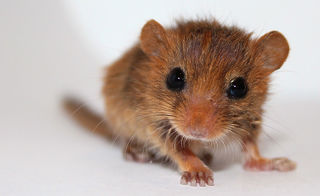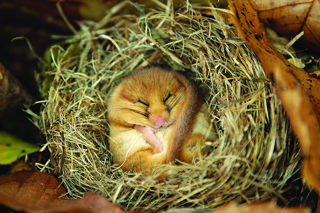
Conservation spotlight - Dormouse
23rd Dec 2020
Species: Hazel dormouse
Looks
Sandy yellow-orange fur and a characteristic long, bushy tail. Weighs around 15-20 kg and is around 6-9 cm long, plus 5-8cm of tail length.
Habitat (living spaces)
Typically found in ancient deciduous woodland, but also occurs in hedgerows and dense scrub if not intensively managed. The dormouse is unable to digest tough leaves so it feeds on flowers, fruits and insects.
The hazel dormouse is mostly found in Southern UK, mainly in Devon, Somerset, Sussex and Kent. They are rarer in the north, due to habitat loss and climate but Wildwood has helped to reintroduce them back to counties such as Yorkshire and Cheshire.
Status in the UK
Dormouse numbers have plummeted in recent years and The People’s Trust for Endangered Species estimates that the population declined by 48% between 1995 and 2015. Habitat loss and changes in woodland management are major threats to the dormouse. Climate change is also cause for concern as milder spells during winter cause the dormouse to wake from hibernation too early, which can lead to starvation. Cold or wet spring and summer months can also delay the mouse’s breeding.
The hazel dormouse is a European Protected Species
Importance for nature
The hazel dormouse is a bioindicator species. It’s presence shows that a habitat is biodiverse and so is important for many other wildlife species. It is also a flagship species. Managing habitats for the dormouse will benefit many other species such as the nightingale and rare woodland flowers.
Wildwood’s work
Wildwood’s conservation team are leading experts in breeding dormice for the national UK reintroduction programme. Over 180 Wildwood bred dormice have successfully been reintroduced to the wild. The Trust is the national studbook holder for the species, meaning we help the National Dormouse Captive Breeders Group select a strong genetic mix for future reintroductions.
We hope to see the hazel dormouse populations recover and spread beyond the strongholds in the South.




